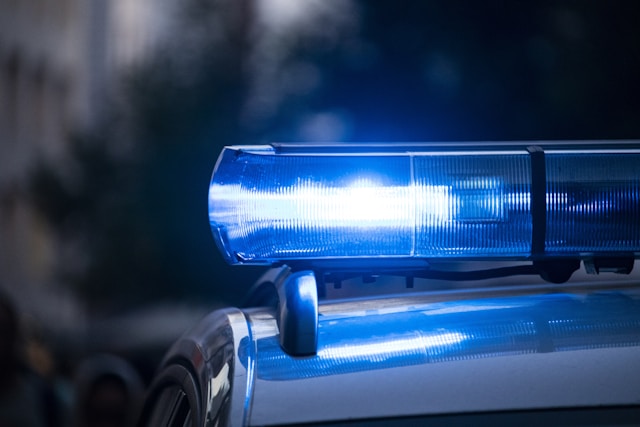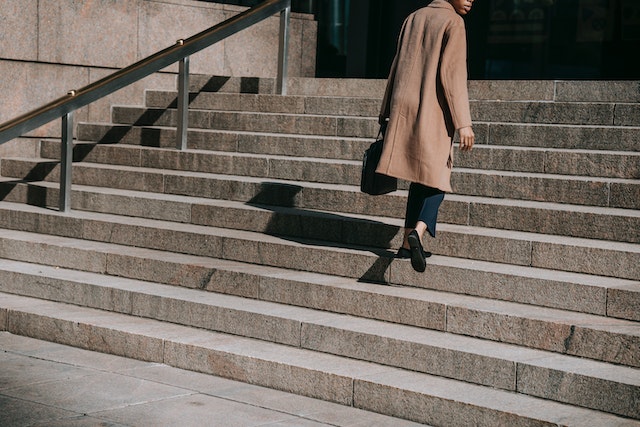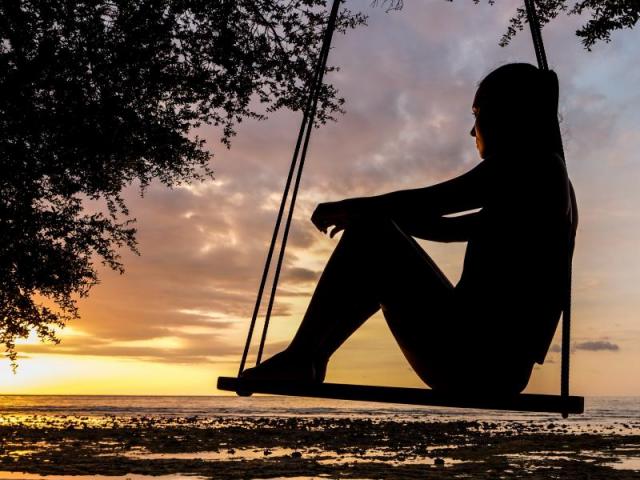New report on women, trans and non-binary peoples experience with police responses to violence
Wed 15 May 2024
A new in-depth report from the Backbone Collective and Hohou te Rongo Kahukura shares findings from research on victim | survivor experience of NZ Police responses. The report makes 54 recommendations to build a safer police response.

New report on victim | survivor experience with police responses
The Backbone Collective and Hohou te Rongo Kahukura have published a report that shares findings from a survey of 599 victim | survivors about their experiences with NZ Police responses to family violence, partner violence or sexual violence.
Their survey found that women, trans people and non-binary people reach out to police seeking urgent help to be safe, but "Overwhelmingly, they are not receiving what they need." While the report does document safe supportive responses from police, the majority of people shared how police involvement made them less safe and in some cases emboldened the abuser, often through police inaction. Trans and non-binary people, Māori and disabled people were more likely to experience poor responses from police.
Make it about us: Victim-survivors’ recommendations for building a safer police response to intimate partner violence, family violence and sexual violence in Aotearoa New Zealand (2024) is an in-depth report that shares the voices of victim | survivors with over 200 quotes from people who completed the survey. A brief summary of the report is also available.
In the foreword, contributing author Bex Fraser called the research landmark as the survey was intentionally trans inclusive. They write:
"This is a landmark change for non-binary and trans people. Where our experiences of reporting to police after violence are similar to those of women, we will be able to tell those stories. And where our experiences differ, we can start to understand why. If there are times when our genders are treated more respectfully than women are, we will be able to take a stance alongside women to advocate. And when there are times when we are treated worse, we will have allies alongside us, understanding that we need change, too."
The report explicitly examines differences in experiences between victim | survivor groups across every stage of contact with police, including whether or not to seek help from the police at all. This approach highlights that trans and non-binary people, Māori and disabled people are receiving significantly less respectful and helpful responses from police across most domains the researchers asked about.
Survey participants were between the ages of 16 and 80+ years, from a range of ethnicities (18% Māori, 5% Pasifika, 4% Asian, 61% Pākehā/NZ European, 14% ethnicities other). Participants included 523 women, 139 of whom identified as sexuality diverse (e.g. lesbian, asexual, bisexual, pansexual, Takatāpui); and 76 trans and non-binary people, including both transfeminine and transmasculine people. For the report, the Backbone sample refers to the 384 women who identified as heterosexual or did not disclose their sexual identity.
Many participants reported having at least one disability including 39% of women in the Backbone sample, 60% of sexuality diverse women and 78% of trans and non-binary people. Many participants had children, including 79% of women in the Backbone sample, 47% of sexuality diverse women and 29% of trans and non-binary people.
Participants were most likely to say that the person who hurt them and/or their children was a man. However, significant numbers of trans and non-binary people (27%) and sexuality diverse women (13%) said the person who abused or assaulted them was a woman. The report also highlights that:
"Importantly, the harmful and transphobic narrative that trans people, especially women, are more likely to be abusers was not supported by this research. No participants reported abuse from a trans woman."
Participants were asked what they hoped would happen to the person who abused or hurt them when they contacted police. Overwhelmingly they hoped the abuser would be kept away from them (62% of women in the Backbone sample, 54% of sexuality diverse women and 72% trans and non-binary people). Other significant hopes included hopes that police actions would stop the violence, hold the abuser accountable and get help for the abuser related to their use of violence. Of participants who had children, one quarter hoped their children would be safer by preventing contact with the abuser. There were variations by ethnicity. For example, despite being less likely to hope for arrest, wāhine Māori in the Backbone sample (37%) were more likely to say the abuser was arrested than non-Māori women in the Backbone sample(22%). The report includes further insights into differences related to the type of violence and relationship to the abuser.
Trans and non-binary people (37%), sexuality diverse women (28%) and women in the Backbone sample (15%) rated their first contact with NZ Police as very poor. Many participants said their first experience with police stopped them from contacting police again.
The research identified high levels of poor responses from police including little or no action, and harmful responses. For example the research found:
- 79% of trans and non-binary people, 63% of women in the Backbone sample, 60% of sexuality diverse women experienced bias or mistreatment from police (based on a range of factors but most often, because of being a victim-survivor and/or gender)
- disabled participants were three times more likely to be accused of being mentally unwell by police than non-disabled participants
- 44% of all participants said police minimised the violence and abuse and 30% said police took the side of the abuser
- only 24% of women in the Backbone sample, 28% of sexuality diverse women and 12% of trans and non-binary people said police understood family and sexual violence.
Trans and non-binary people, wāhine Māori and disabled people were far more likely to say the police treated them very poorly and far less likely to say police used helpful behaviours.
In particular, trans and non-binary reported experiencing significant overt homophobia and misgendering (referring to a trans person using an incorrect name, title or pronoun). Quotes from trans and non-binary participants shared examples of Police intentionally shaming them, laughing at them, referred to them with slurs, using the wrong pronouns after being corrected, and refusing to file reports, saying the sexual assault was what they deserved. The statistics and quotes from trans and non-binary participants highlight significant inconsistency in Police responses.
One in four women in the Backbone sample, 29% of sexuality diverse women and 51% of trans and non-binary people said police involvement made them less safe. Many participants also identified that their children were made less safe. They identified many ways in which police responses made them less safe. Poor police responses enabled the abuser to be more abusive:
"Victim-survivors described police responses that supported the abuser and resulted in violence and abuse escalating as the abuser saw they could get away with using violence and/or retaliated for police involvement. For many participants this was a result of police failing to take action in response to the violence and abuse including failing to arrest, prosecute, respond to breaches of orders, or discouraging victim-survivors from making a statement. In about a third of cases in both samples, abusers used police involvement to further harm the victim-survivor by taking revenge on them for contacting police or making out to police the victim-survivor was abusive/violent and presenting themselves as the victim, particularly for women in the Backbone sample."
Participants also identified how this had flow on effects to other parts of the violence response system. For example one third of women in the Backbone sample and 15% of the sexuality diverse women and trans and non-binary people said Family Court professionals now saw them as a trouble maker/making up the abuse/seeking revenge as a result of police involvement.
Participants also included 205 victim | survivors who had not had contact with police. A range of reasons affected their decision to not contact police including fears the police would treat them poorly, ashamed about what happened, fear it would make things worse, afraid the police wouldn't believe them and unsure if what happened was a crime. The report explores variations by type of violence, ethnicity, disability and more.
Some participants identified that police involvement made them feel a little or a lot safer: 39% of women in the Backbone sample and 37% of sexuality diverse women, but just 15% of trans and non-binary people. Helpful police actions included:
- listening to and believing victim | survivors
- acting swiftly
- arresting, charging, or removing the abuser, or issuing a Police Safety Order against the abuser
- providing information and referral to support services
- women officers trained in domestic violence being present
- ensuring safety of the victim | survivor and that of their children.
For participants who had children, "When children had positive interactions with police (calm, reassuring, friendly and kind communication, validating the child’s experiences, keeping the children informed and taking action to remove the abuser), children were more likely to trust police and have confidence in their ability to keep them safe."
Trans and non-binary people reported the lowest rates of help from police on nearly every option for ways that police could help. For example:
- Police put their safety first - 16% of trans and non-binary people, compared to 25% of women in the Backbone sample and 34% of sexuality diverse women
- Took the violence or abuse seriously - 24% of trans and non-binary people compared to 45% of women in the Backbone sample and 44% of sexuality diverse women.
Chapters 7 through 10 focus on improving the NZ Police response to family violence and sexual violence. This covers a wide range of responses and changes that victim | survivors want. This includes:
- police best practice
- police to meet the unique and diverse needs of victim-survivors
- independent advocates
- practical support police
- control of information sharing
- improving understanding and knowledge among police
- changes to institutional racism within police
- better responses to children
- respect for Takatāpui, trans and non-binary people
- police trained to understand and respond appropriately to sexuality diverse people
- police to take a rights-based approach for disabled people.
Pages 23 - 33 of report summary outlines key practical improvements that victim | survivors want in the police response. The reports makes 54 recommendations of actions to improve the police response to family violence and sexual violence in Aotearoa. The recommendations cover the following 5 calls for action:
- Honour the need for change
- Establish a specialist family violence police unit
- Create a victim-survivor-centred approach
- Establish specialist training for police
- Promote the importance of the right response every time.
Many of the recommendations and practical improvements identified by victim | survivors relate to the wider family violence and sexual violence particularly those that relate to addressing discrimination and bias, and creating a victim-survivor-centred approach.
The report concludes with the importance of centring the victim | survivor in police response, writing:
"Victim-survivors called police because they wanted the violence and abuse to stop; they were scared, they needed protection for themselves and/or their children and they wanted police to use their statutory powers to help make them safe."
For an overview of the report and comments from the report authors and advocates see The Post article When the frontline – and last resort – is a let down.
Related news
The 2023 NZ Police Briefing to the Incoming Minister, Mark Mitchell, proposed changes to the way NZ Police respond to family violence (referred to as family harm). The Briefing notes that police "...responding to social harm is displacing our focus on traditional visible policing" and "This is most clearly demonstrated by the continually increasing volume of family harm, mental health, and child protection calls, but also plays out in other areas like truancy, alcohol and drug abuse, and homelessness."
The Briefing identified 4 key opportunities to improve Police outcomes including:
“Supporting Police to re-focus on our core business and away from ‘expanded’ activities, particularly in the social domain, by supporting managed withdrawal and advocating for that role to be filled by others. For example, reducing Police’s role in mental health crisis response is a clear opportunity, as is right sizing our response to family harm.” (see page 9)
The Briefing also outlined a six-month proof of concept (POC) that ended in June 2023 aimed at improving response rates for “...non-urgent (priority two and below) family harm events.” The POC trialled a phone-based triage service to “...provide timely risk assessment of further harm and help identify the appropriate support required.”
The report, Family Harm Non-Emergency Triage (FHNT) evaluation report: September 2023, from the New Zealand Evidence Based Policing Centre shares findings from the POC evaluation. The report has not been publicly released. Seema Kotecha, Manager Family Harm Prevention at Police National Headquarters shared findings from the report and details about the new phone triage system in the April 2024 Systems Working Group meeting. For more information about the Systems Working Group, contact Te Puna Aonui at relationships@tepunaaonui.govt.nz.
Following the publication of the Police BIM, a number of sector advocates raised concerns about the possibility of Police reducing their role in responding to family violence call outs.
In comments made to RNZ, Women's Refuge chief executive Ang Jury said that "People don't invite police around just because they feel like a visit. They invite them around because they're scared." Jury also raised concerns about plans to extend the phone-based triaging service, commenting that "Family violence victims, will often underplay what it is that's happening for a variety of reasons and they may not necessarily be providing enough information for that call taker to triage effectively".
In a media statement responding to the release of the Police BIM, Dr Bonnie Robinson, CEO Presbyterian Support Northern which provides Shine family violence response service, said:
“Police are the only agency that has the authority to arrest and detain someone or de-escalate the situation and so potentially, they help protect children at the address as well.
Family violence is a huge issue for New Zealand and it’s important that we as a society address it effectively.
It’s difficult to see how the role of the Police could be filled by others as the Police suggest. Family violence happens 24/7 all year round. We can’t think of any other service that can fill that Police function without substantial investment and training. Let’s not forget, some women lose their lives to family violence every year. By being on the scene, Police are best placed to react, especially if they know how long the situation has been going on for or past history of the address.”
Legal academics Julie Tolmie and Carrie Leonetti have also raised concerns. See further commentary in the related media below.
Related research
To further explore victim | survivors experiences with police responses and help seeking, see the following resources:
- Victim-survivor feedback on the government's National Strategy and Action Plan to Eliminate Family Violence and Sexual Violence: summary of engagement processes (2022) by The Backbone Collective
- Victim-survivor perspectives on longer-term support after experiencing violence and abuse (2020) by The Backbone Collective
- Counting ourselves: the health and wellbeing of trans and non-binary people in Aotearoa New Zealand (2019) from the Transgender Health Research Lab at the University of Waikato
- Factors influencing help-seeking by those who have experienced intimate partner violence: results from a New Zealand population-based study (2021) by Zarintaj Malihi, Janet Fanslow, Ladan Hashemi, Pauline Gulliver, and Tracey McIntosh
- Seeking of help and support after experiencing sexual harm: considerations for cisgender women, cisgender men and gender-diverse people (2022) by Tess Patterson, Linda Hobbs, Gareth Treharne, and Melanie Beres
- Controlling behaviours and help-seeking for family violence (2023) and Patterns of victimisation by family members and help-seeking by victims (2022) from the Ministry of Justice using data from the New Zealand Crime and Victim Survey.
Update: Researchers from AUT published new research that explored the role of police in responding to mental distress in Aotearoa. The project gathered diverse stories of encounters with the police. The researchers also talked to police and spent time with frontline police officers to learn about their experiences of responding to mental health-related incidents. They have published 2 reports. The first one details the research findings and recommendations for change. The second report is a collection of whānau/citizen stories. Find more information and reports on the project website. Also see The Conversation article Police are frustrated with mental health callouts – here’s how to reduce their involvement and improve support from Katey Thom, one of the researchers.
Related media
Police minister can’t promise no more lives lost with policing changes, Stuff, 27.07.2024
Human Rights Review Tribunal orders police to pay sexual assault complainant $50,000, NZ Herald, 06.05.2024 (see the Human Rights Review Tribunal decision [2024] NZHRRT 22)
Did we just decriminalise family violence?, The Spinoff, 27.02.2024
What do we mean when we say ‘family violence’?, Newsroom, 16.02.2024
Advocates warn more resources needed if police pull back from mental heath callouts, RNZ, 14.02.2024
Concern over police plans to pull back from family harm callouts, RNZ, 12.02.2024
Police outline plans for mental distress call-outs, RNZ, Morning Report Audio, 13.02.2024
Mental health option could be added when people call 111, minister says, RNZ, 12.02.2024
Victims of crime don’t feel heard; here’s what we can do about that, The Post, 08.12.2023
Image: Max Fleischmann on Unsplash






